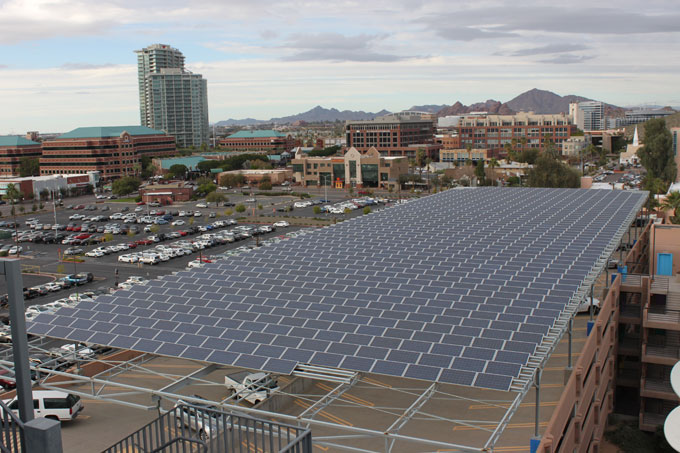U.S. consumers generate and consume electricity.
olar power offers enormous promise as a non-carbon-emitting energy resource. Yet in the U.S. today, less than 1% percent of our total energy supply – roughly 2.3% of our electricity – comes from the sun. Accelerating the shift to an economy substantially fueled by solar and other renewable energy resources will demand major policy changes at all levels of government. The technology, however, is largely at hand.

Photovoltaic array atop a parking garage, Arizona State University-Tempe. Solar power supplies nearly 50% of the peak daytime electric load at ASU’s four campuses and Research Park. (Photo credit: Philip Warburg)
A bit of solar power history
Through most of the 20th century, efforts to tap solar energy focused on the sun’s thermal properties. Commercially introduced in California in 1909, water-heating solar collectors achieved greater status in the wake of the 1973 oil embargo, when President Jimmy Carter installed a much-heralded solar array on the White House, producing hot water for its laundry and cafeteria.
The technology for reliably converting sunlight to electricity emerged from Bell Labs in the 1950s, but the expense of manufacturing photovoltaic, or PV, cells confined them to high-value uses such as remote radio transmission and the space program. It was only with a dramatic drop in the price of silicon PV cells, from $76 per watt in 1977 to a fraction of a dollar in recent years, that PV has come into widespread use.
Continue reading at: An introduction to the state of solar power in the U.S. » Yale Climate Connections

No comments:
Post a Comment